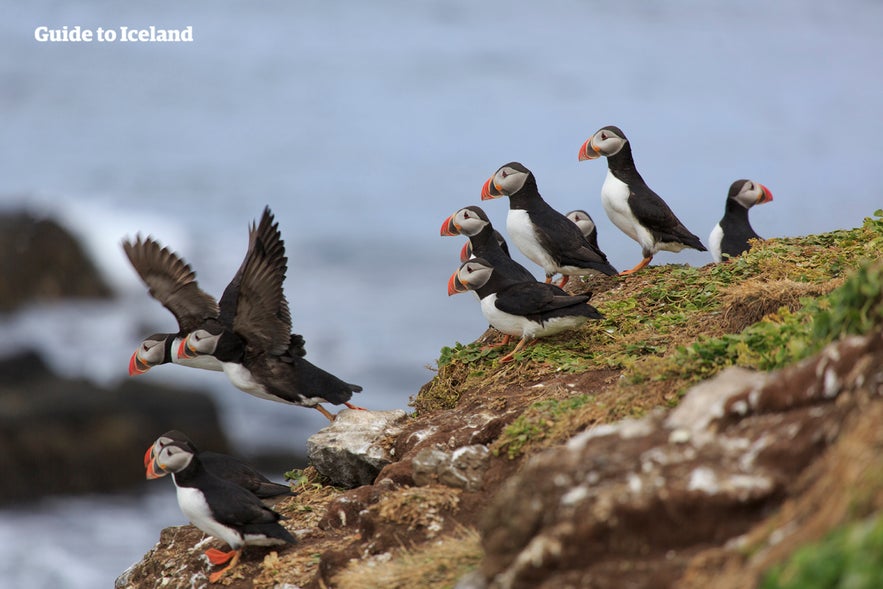Drangey Travel Guide

Drangey, with its steep sea cliff and rich birdlife, is situated in the middle of Skagafjordur fjord in North Iceland. It towers majestically over the fjord at 180m high, resembling a rock fortress.
Explore this area of Iceland on a self drive tour.
Photo from Wikimedia, Creative Commons, by Bromr. No edits made.
Drangey is the remnant of a 700,000-year-old volcano and is mostly made of palagonite tuff. More creative with their explanations, Icelandic Folklore tells us that two trolls and their cow were turned to stone after being caught by the sunlight while crossing the fjord. It’s well-known that trolls turn to stone when sunlight touches them, and sadly this is what happened. The island of Drangey is said to be the cow, whereas the female (Kerling or ‘Ugly Old Woman’ in English) stands slightly off to the side, and the male (Karl or ‘Man’) has sadly since been lost to the elements.
Drangey is also famous for the refuge of Icelandic outlaw Grettir, the protagonist of Grettis saga. Grettir is believed to have been physically strong, but with an ill-spirited personality. He was grumpy, miserable and unlucky to match. His bad luck originates from a curse placed upon him by a pagan shepherd named Glamr. Once cursed, disaster follows Grettir around and after a series of unfortunate events, he ends up killing a hut full of people after accidentally setting it alight. This results in his outlaw. He found refuge on Drangey, where he lived with his younger brother Illugi for twenty years.
The island also features later in the Grettis saga as Grettir completes a 7km swim from Drangey to Reykir on the mainland. He then warms himself in the geothermal pool there, today named Grettislaug (‘Grettis pool’).

Drangey is a birdwatcher’s paradise. It is a nesting place for thousands of seabirds including puffins, guillemots, gannets, kittiwakes, fulmars, and shearwaters, as well as ravens and gyrfalcons. As a result, fowling was for centuries a source of livelihood for the people of Skagafjordur.
There is a man-made path to the top of the island along the face of the cliffs, where it is possible to see puffins nesting in season.
Attractions Nearby
Popular categories

Download Iceland’s biggest travel marketplace to your phone to manage your entire trip in one place
Scan this QR code with your phone camera and press the link that appears to add Iceland’s biggest travel marketplace into your pocket. Enter your phone number or email address to receive an SMS or email with the download link.


















